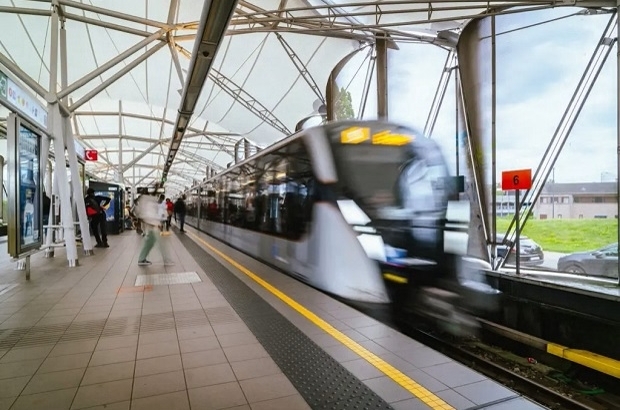- Daily & Weekly newsletters
- Buy & download The Bulletin
- Comment on our articles
Major works to disrupt metro line 1 from this week
Brussels’ metro line 1, which runs between Gare de l’Ouest and Stockel, will be partially closed for three weeks in August for signalling works.
The renovation works aim to “make traffic organisation more reliable and flexible, for greater passenger comfort”, Brussels public transport operator Stib said.
It is carrying out signalling works to increase the frequency of the service and needs more time than the customary four hours at night, from 1.00 and 5.00, when the metro network is not running.
In practice, from 5 to 22 August, there will be no metros between Joséphine-Charlotte and Stockel from Monday to Thursday after 21.00. Stib will operate replacement mbuses between Mérode and Stockel during the shutdown. Metros will run as normal until 21.00 and all day on Friday, Saturday and Sunday.
Metros run on signalling technology. The current signalling system, in use since 1976, does not allow for more metro trains to run on lines 1 and 5.
Since 2020, Stib has been replacing the existing signalling on these arteries with a more modern Communication Based Train Control (CTBC) system.
“The installation of the new CBTC signalling system is a major project, crucial to the future of the metro,” said Stib chief executive Brieuc de Meeûs.
“The common trunk of lines 1 and 5 is reaching saturation point at rush hour. It is therefore essential to provide concrete solutions to meet the challenges we will face over the next few years, particularly in terms of passenger numbers. The CBTC will also offer greater comfort, regularity and reliability for our passengers.”
The CBTC technology uses real-time data to determine the precise distance between metros, thus increasing frequency of trains on the network without sacrificing safety.
Under the new system, signalling will operate via direct communication between trains. Each train will know, at all times, the distance separating it from the one in front and the one behind. This will enable the metros to move much closer together, while maintaining a minimum distance between them at all times.
This more precise data will enable the interval between two metro trains to be reduced to two minutes, compared with two minutes and 30 seconds today. The metro will also be able to adapt to real-life conditions (in case of an incident or delay). In future, the technology will also allow for driverless metros.
“Once installed, the new signalling system will provide much greater flexibility and finesse in real-time metro control, thanks to a reduced distance between trains and more precise knowledge of their location,” de Meeûs added.
“For passengers, this will mean more regular intervals between trains, smoother incident resolution and increased frequency,” said Marleen Telemans, programme director for metro modernisation.
Stib said that the installation of the CBTC is part of a wider programme to modernise the metro network. This includes new signalling, the acquisition of new M7 metro trains and the adaptation of older metro trains
While the new metro trains are equipped with CBTC as standard, this is not yet the case for the ‘Boas’ bought in 2007 and 2009 and the older orange trains operating on the network.


















